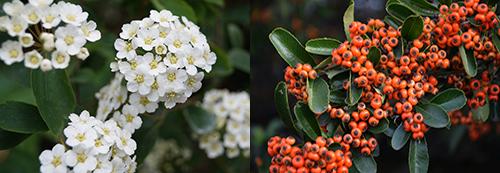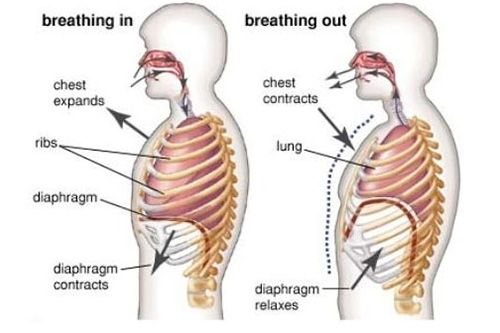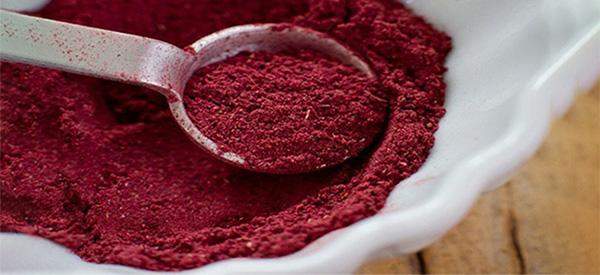When was the last time you had your blood pressure checked? According to the American Heart Association (AHA), around 34% of American adults have high blood pressure.
Known as the silent killer, increasing the risk of heart disease and strokes, high blood pressure is not something to be ignored. An ideal blood pressure reading is generally regarded as being below 120 mmHg (systolic) or 80 mmHg (diastolic), anything over this and we should be looking at ways to reduce it. That said, fluctuations are extremely common and affect us all, it is only when our blood pressure is high over a sustained period that it becomes a cause for concern.
For this reason, it is important to monitor blood pressure levels over time in order to get a clearer, more accurate picture. Home monitor kits, may not only save us from having to make repeated trips to our health provider, but could give us better autonomy and insight as to what affects these levels and what we can personally do to lower it before resorting to conventional medication.
This article looks at remedies which we can easily try ourselves that have been shown to have a positive impact on lowering blood pressure. The list is of course, not exclusive; Black Seed for instance has previously been reported in our July article, ‘Black Seed – The Remedy For Everything But Death’, as causing a reduction in both systolic and diastolic blood pressure and is definitely worth consideration.
Hibiscus
For a delicious brew, with the additional benefit of reducing blood pressure, try Hibiscus. The healing powers of the red aromatic plant, Hibiscus Sabdariffa, have been shown to extend to hypotension. Research was carried out by nutritionist Mckay, on the anti-hypertensive properties of Hibiscus and presented at the American Heart Association, annual conference in 2008/2009.
This randomized, double-blind, placebo-controlled clinical trial was conducted on 65 pre- and mildly hypertensive adults, aged between 30-70 over a period of 6 weeks. They were divided into two groups, the first group being given 240 ml of brewed hibiscus tea three times a day whilst the second group were given a placebo. The results showed that blood pressure was reduced on average by 7 mmHg and the effect was even greater in those with a higher pre-existing baseline level of systolic blood pressure.
The most common way to ingest hibiscus is by making a tea. The part of the plant used is the flower, which is typically dried and steeped in boiling water. If you can’t get fresh hibiscus, health food stores will stock the dried flowers.
Garlic
Garlic, can lower blood pressure and there is research to validate this.
A meta analysis analyzing the effects of garlic on blood pressure was carried out by Reid Ketal in 2008. This review identified 11 previous studies in which the participants mostly took doses ranging from 600-900 mg over 11 – 23 weeks. Overall, the studies showed that on average systolic pressure was reduced by an average of 4.6 mmHg. Interestingly, those previously diagnosed with high blood pressure, saw a more impressive drop of 8.4 mmHg systolic and 7.3 mmHg diastolic. More recently in 2016, a double-blind randomized placebo-controlled trial published in the journal, Integrated Blood Pressure Control, concluded that daily intake of aged garlic extract was as effective as standard blood pressure medication.
Related: How To Prepare Medicinal Pickled Garlic
The active ingredient in garlic credited with garlic’s blood pressure lowering effect is Allicin. Due to some research showing that certain garlic brands do not contain, or only release 15% of their allicin potential, it has been suggested that powdered allicin extract might be the best way to benefit from a stable amount. You can of course opt for fresh garlic, for which the recommended dose varies between 1-4 cloves a day. Bear in mind however, allicin is only released in fresh garlic when it is crushed or chopped; it is wasted if not taken immediately.
Hawthorn
The use of Hawthorn, often referred to as the ‘heart herb’, has been documented as being used in western medicine to treat cardiovascular disease as far back as the 1st century. It also has a very long history of medicinal use in Chinese medicine (Shan Zha). Several studies have concluded that hawthorn significantly improves heart function, though despite its historical use, there is less isolated research on its effect on hypotension. The first randomized controlled trial to show that supplementation with a hawthorn extract significantly reduced blood pressure was in people with type II diabetes. According to the University of Maryland Medical Centre (UMMC), it is the anti-oxidant flavonoids that may be responsible for helping to dilate blood vessels, improving blood flow and protecting the vessels from damage.
For those wishing to try it UMMC, suggest 1,200 mg per day of a herbal extract, corresponding to 6 grams per day of dried flowering tops. It is contraindicated with various medicines, so check with your healthcare provider before taking.
Related: Just Like Doxycycline: The Antibiotic That Grows in Your Backyard
You can dry and powder your own berries by mashing them with a tiny bit of water, removing the stone and putting through a sieve. Spread the pulp to dry on baking paper, once completely dry, they can be made into powder by grinding. They are however very tough, so you may prefer to buy berries already dried from a herbal supplier. Another way to ingest the berries is to make a tincture by covering the berries in vodka or brandy and leaving in an airtight jar in a cool dark place for at least 2-4 weeks.
Lifestyle and diet
It may sound like the obvious, but let’s not be too hasty to overlook or underestimate the effect of making simple lifestyle changes in order to bring our lives into balance. Without dispute, those who have a balanced diet, take regular exercise and take steps to reduce stress, whether through meditation or other means, are least at risk from high blood pressure.
Current advice from the American Heart Association includes limiting alcohol, partaking in regular physical activity and no surprises here, eating a well-balanced, low-salt diet. The recommended ideal daily intake of salt from the AHA is less than a third of a teaspoon and no more than a teaspoon.
A point worth noting is that potassium functions in the body to lessen the effect of sodium in the body; the more potassium we eat, the more sodium we pass in our urine. Our bodies are miracle machines constantly hard at work to achieve homeostasis! The recommended potassium intake for an average adult is 4,700 mg per day, but since it is possible to overdose on potassium supplements, it is advisable to get the potassium your body needs through the foods you eat. Potassium rich foods include:
- fruits, such as apricots, bananas, kiwi, oranges, and pineapples
- vegetables, such as leafy greens, carrots, and potatoes
- lean meats
- whole grains
- beans and nuts
Deep breathing
Why wait? You can begin the steps to lowering your blood pressure right now by taking a few deep breaths. Deep breathing can counteract the fight or flight response by triggering the parasympathetic nervous system, the nervous system we want to be running on in the long-term if we are to enjoy good health.
A Japanese study in 2005 showed that blood pressure can be lowered by as little as 6 deep breaths. Whilst deep breathing exercises are useful, it’s paying attention to our habitual pattern of breathing that will bring optimum results. Is it your chest or abdomen that rises when you breath? Deep diaphragmatic breathing into the abdomen as opposed to the chest is what we want to adopt; this increases blood flow to your body’s tissues and reduces resistance in your blood vessels with the ultimate effect of lowering blood pressure.
You may also like:
 10 Potent Plants That Kill Pain Fast
10 Potent Plants That Kill Pain Fast
DIY Back-Up Generator (video)
12 Old Fashioned Arthritis Remedies Your Ancestors Used















TURMERIC!…You Missed Turmeric!
Turmeric took my BP down from 160/120
to 120/80 (per Medical Doctor)
Take with Black Pepper. Off all heart pills now.
Just from Turmeric! Four month ago. Now still 120/80.
taking Turmeric&BPepper regularly.
What mil. and is it a certain brand tell me more please I’m up to 50mg 3x a day would appreciate your info.
The u, kc
Kc: I don’t think it is mil. I think the abbreviation you are referring to is ml which is milliliters, a small measurement in the metric system of measuring.
In some circles, mil mean military such as in milspec which means military specifications. It generally is used in connection with packaging. As you can imagine, items many times are shipped long distances in varying climatic regions and packaging needs to be able to stand up to rigorous handling and extremes of climate.
Buy powdered turmeric, which you should be able to buy in 500g lots as we can in Australia. Buy at health food store. Or buy fresh turmeric and use, holding back a corm or two and growing them in a sunny spot in the garden or a large tub on your balcony or veranday if you don;t have a garden. Put a little turmeric in every savoury food you can, or if you find you enjoy turmeric milk/golden milk, find one of the many online recipes and make it. Always add some black pepper and a fat of some kind (full-cream, avocado, coconut oil or something similar) to aid absorption and to make sure you get the full benefit. There’s no need to buy turmeric supplements – expensive in comparison to powdered or fresh, and you don’t know what else has been put in supplements. Until you see how you like turmeric, use very small amounts and gradually increase it. I doubt it’s possible to ‘overdose’ on it.
Thank you for sharing this. What great results!
How much turmeric and black pepper? Pill or in a drink?
How much turmeric, and did you use fresh or powdered? How much black pepper?
I have learned and made note of so much info from your site. At time I am only just recently needing info for blood pressure, I am 79 yrs and take many vitamin supplements daily. I and my family has been plagued with arthritis and I am reading all I can find to help with the pain and joint deformity, even to help my friends. I have been into Native American lore for years and do know about a lot of their remedies. “God’s Little Pharmacy” little Pharmacy right in our backyards. Thank you All.
i used SUN Chlorella about 20 years ago and my fingers are still straight and pain free. that is the only brand that works. o need to start using it again
Great article, informative, succinct, easy to read. Thanks!
Fresh, healthy foods are always our first choice. And they taste so much better! In tough times, from a large scale SHTF to times of personal financial hardship, it can be a matter of survival to have a stockpile of essential vitamins, herbs, and minerals. We may not be able to access the good fresh vegetables. Floods may wash away our stockpiles, the ground may be littered with debris and too saturated to plant. Hurricanes or tornadoes may have blown away our homes. Blizzards may cause power outages. Earthquakes may destroy the highways and rails that transport our food. Infectious diseases may place too much demand on our health care systems, or make us quarantine ourselves away from the madding crowd until that curse passes. And so on. Even if our shelter and food storage make it through, it could be in the dead of winter. Having that vitamin C, or D, magnesium and potassium, and understanding as much as we can about how they work in our bodies, can make all the difference not just for us alone, but for our neighbors and even our communities.
I don’t remember what year, or even what state, although I think it was Washington, there was a terrible flood, and a community was cut off for quite a while. The Mormon neighbors among them opened their hearts and their storehouses to provide food and water for the community. Isn’t that the model we aspire to? To hang together, so that we need not hang separately? Staying healthy so we can keep going sounds like a good idea.
Thanks Lucy!
The only comment I have is that while the test parameters reportedly met the usual test standards, 65 individuals hardly is a test that can be extrapolated to cover the population at large.
Yes, this is a very valid point. More research is indeed needed.
Turmeric cured my arthritis
A Curandera recommended to my S.O. we each daily chop up a whole garlic clove, put it in a spoon and spritz it well with fresh lime juice, then shoot it down the hatch with a water chaser.
Great to hear first hand such great results from Turmeric!
Thanks for sharing this recommendation. Turmeric comment meant for other post – sorry!
Este es un blog que enseña como sobrevivir en caso de catastrofe, NO es sobre medicina, lo que se menciona es para casos fuera de la vida normal, si careces de Farmacias, medicos, hospitales y todo lo que conocemos para auxilio medico/salud, es conveniente saber lo que nuestros antepasados tenian para estos menesteres, para esto es que existen estas paginas que como indica su nombre”” PREPPER”” uds. son gente adulta, como no entienden esto tan basico, es solo saber leer y comprender, sigan este sitio y aprenderan de SOBREVIVENCIA, y aprovechen que despues puede ser tarde.
Yeah yeah this is a click bank link and the thing is they drone on and on for so long that you fall asleep. And I just woke up an hour ago.